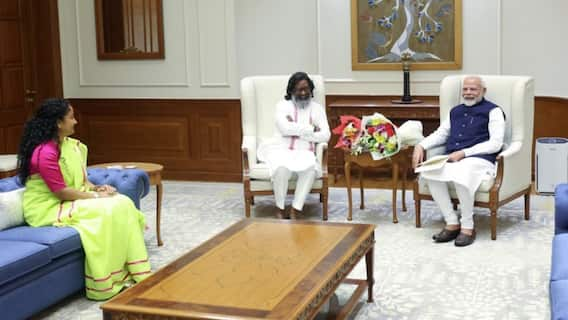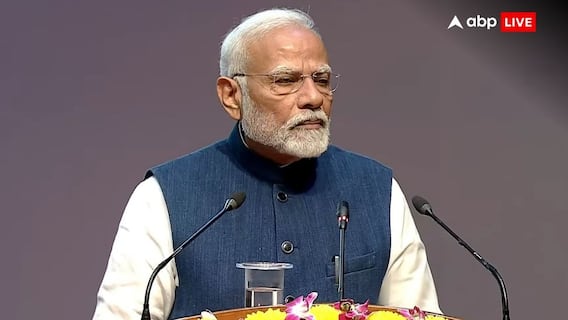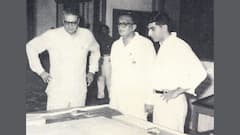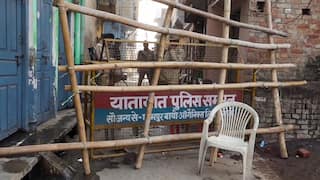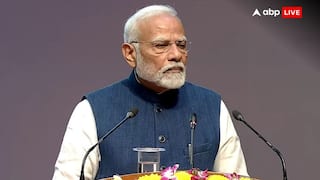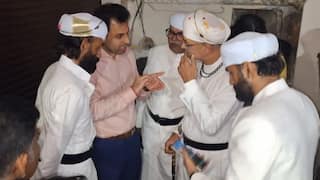Explorer
Advertisement
Madhya Pradesh: Why Chanderi fabrics still can't weave spot in India's billion dollar textile market
The demand must have fallen down as casual and easy to go dressing culture has developed among females over the past few decades, but still the industry stands tall with an overall worth of around $15 billion .

Chanderi area in Ashok Nagar district of Madhya Pradesh is known for its historical importance as well as the world famous hand woven Chanderi sarees. (Image: AFP/ Representational)
Chanderi: Even woman of this country has been awed by the beauty of Chanderi fabric and yet we know so little about it! Since ages, among almost every traditions and establishments of India, there has always been a custom of sarees among women. The demand must have fallen down as casual and easy to go dressing culture has developed among females over the past few decades, but still the industry stands tall with an overall worth of around $15 billion . From Gandhiji to Modiji, our country's leaders have always promoted the mantra of ‘Made in India’. Verity of textile and labour makes sarees available for women starting from Rs 100 and ranging up to lakhs of rupees. Sarees cover almost all the ages and every stratum of females. There are many big manufacturers and suppliers in India but still we don't have any significant player in this industry.
Chanderi area in Ashok Nagar district of Madhya Pradesh is known for its historical importance as well as the world famous hand woven Chanderi sarees. The history speaks of Madhya Pradesh as a renowned centre for weaving between the 7th century and the 2nd century BC. The state rose to prominence in the 11th century, when it became one of the most important trade routes in India because of its proximity to the arterial routes to the ancient ports of Gujarat, Malwa, central India and Deccan regions. Chanderi fabric has always had the patronage of the ruling class of the country because of its unique sheer texture and intricate embroidery with gold and silver. If we look at the history of textile in MP, it shows that handlooms wove Chanderi sarees for royalty between the 12th and the 13th centuries.
These sarees are minute textured fabrics of silk with cotton framed with zari hand woven work and the most fascinating is its royal look. During my recent visit to Chanderi, with the help of Madhya Pradesh Tourism to learn about this industry, I was surprised by the manpower, skills and expertise a single craftsman puts. Though this remarkable effort often goes unnoticed, but put this on a commercial graph of growth and potential of the sector is immense.
However, after a deep analysis of the industry, we found some major roadblocks that pullthe industry from attaining a mainstream tag. Some of the challenges are:
- Lack of marketing
- Sales channels
- Accessibility – despite the fact that it was a main trade hub and on Delhi - South main trade route before Babur invaded it in 1528.
- Too many SKUs
Speaking to the local weavers and after watching their work closely for few hours, it was understood that the main missing link is marketing. Marketing and branding actually decide the last selling price of a product and in case of chanderi sarees, the segment has never been seen commercial boom. Rather it is only a community driven program which is based on daily wages of workers who yield limited sarees during a specific time or weave only on orders.
The demand and supply chain in the case of hand looms are mostly affected by the agencies who are serving as bridges / multiple communication channels between weavers and buyers. Congratulations to MP Tourism to initiate and make people aware about chanderi sarees and their motive of developing chanderi itself as a mainstream market place.
This is a contributory article written by Saurav Kumar Sinha, President, Manthan Trust.
Follow Business News on ABP Live for more latest stories and trending topics. Watch breaking news and top headlines online on ABP News LIVE TV
View More
Advertisement
IPL Auction 2025
Advertisement
Advertisement
Top Headlines
World
Cities
Election 2024
India
Advertisement
Trending News








